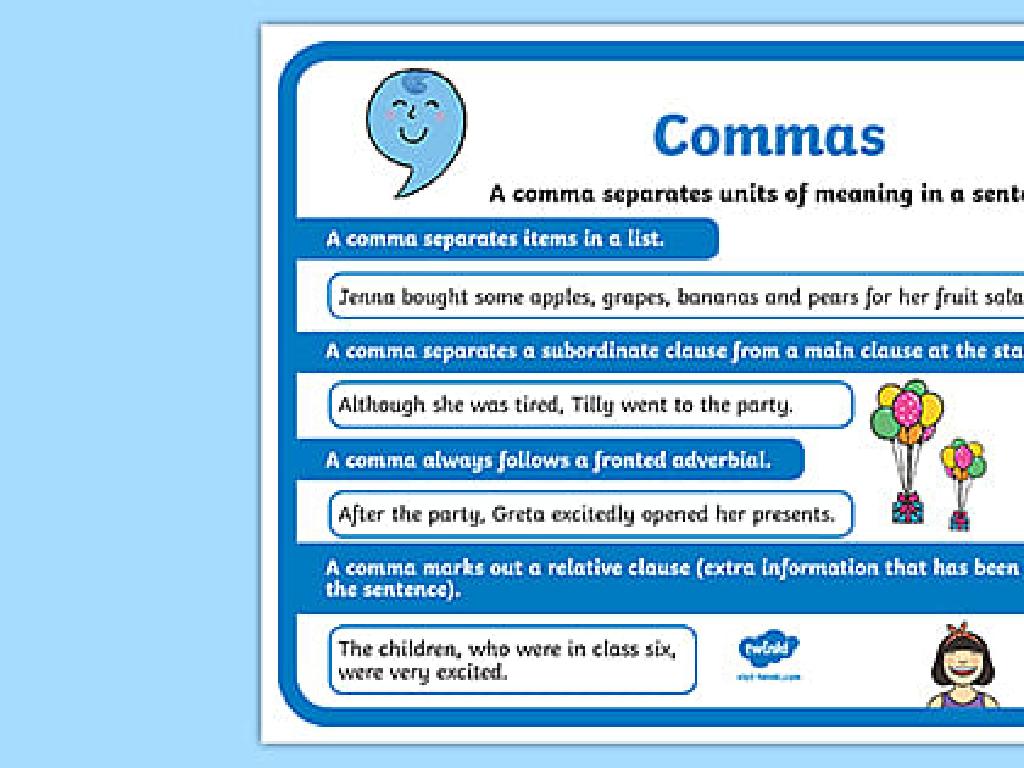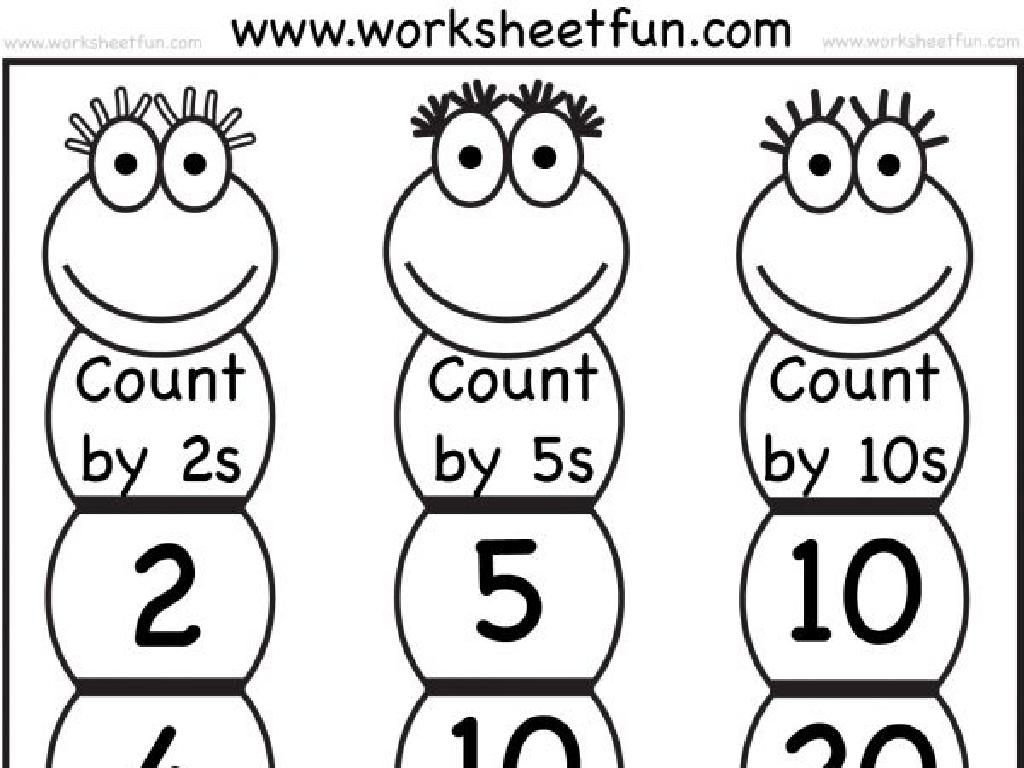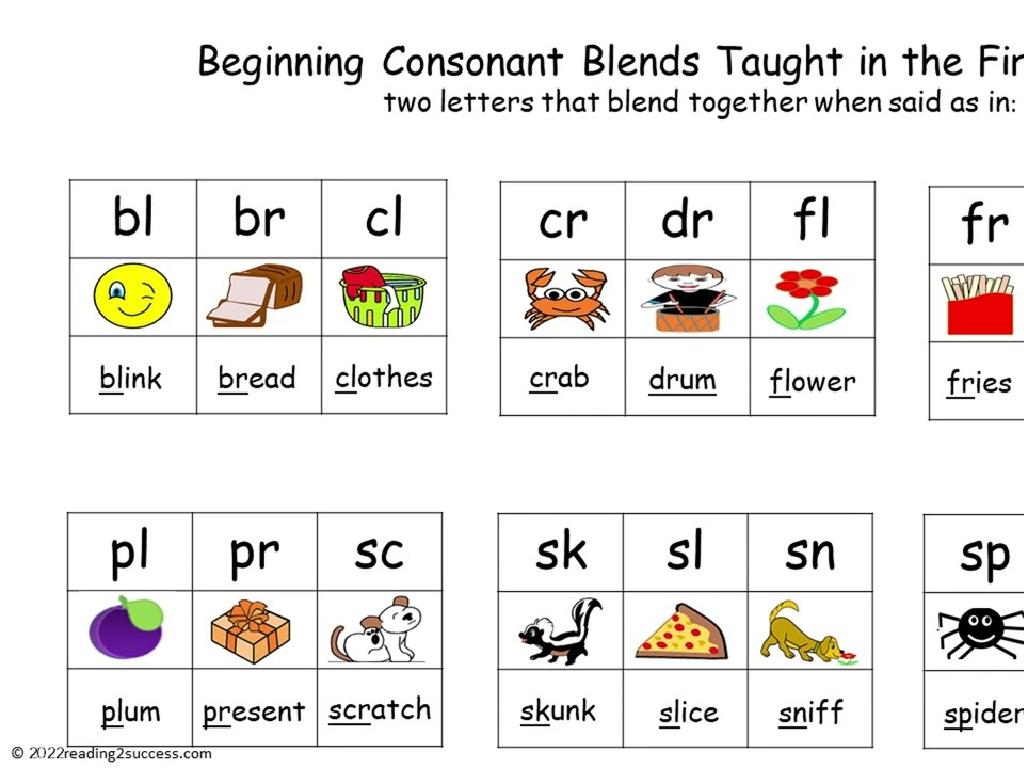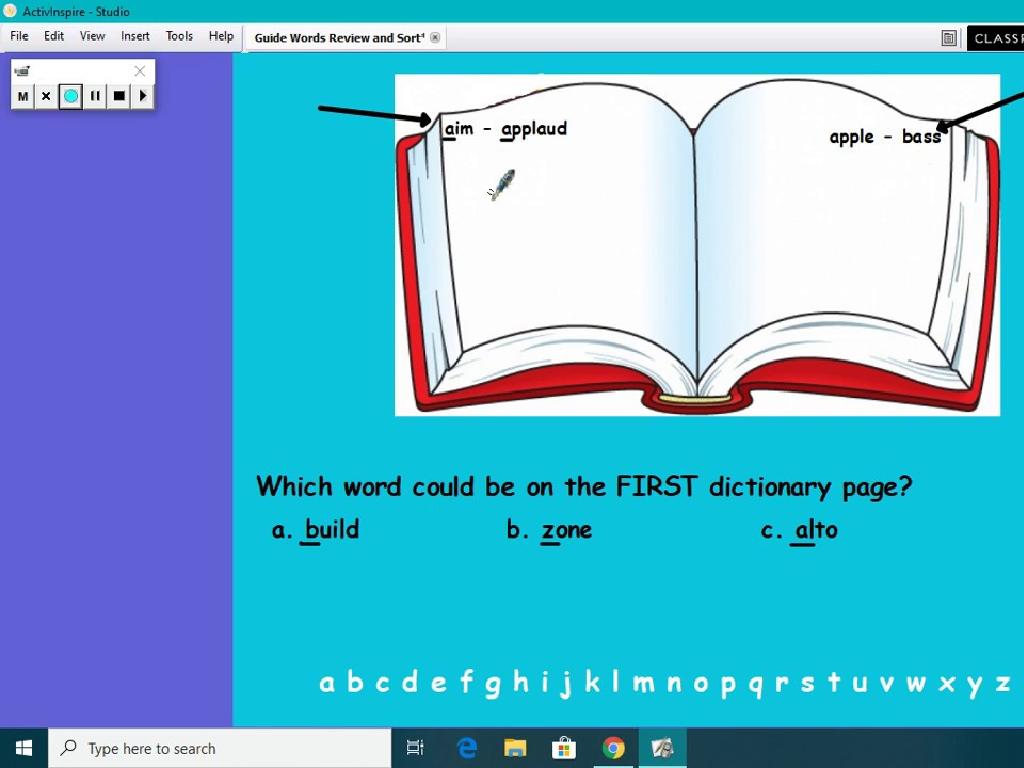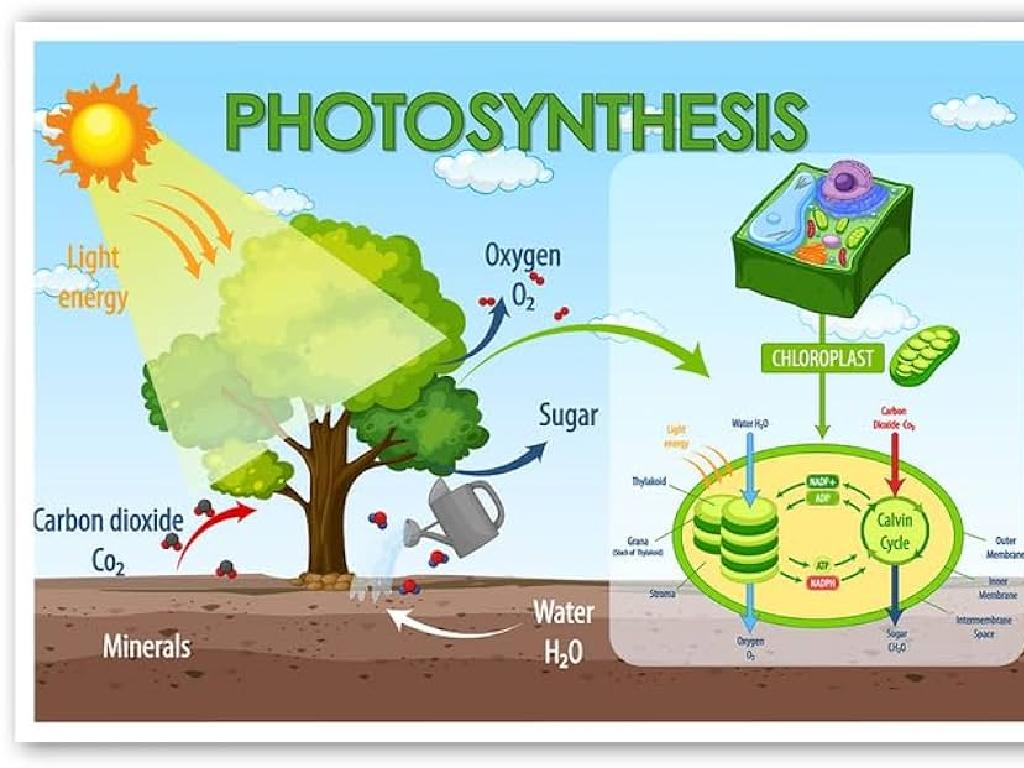Use Thesaurus Entries
Subject: Language arts
Grade: Seventh grade
Topic: 5
Please LOG IN to download the presentation. Access is available to registered users only.
View More Content
Mastering Language with a Thesaurus
– What is a Thesaurus?
– A book or database of synonyms and antonyms
– Exploring synonyms for vocabulary growth
– Find synonyms for ‘happy’: joyful, elated, content
– The power of a Thesaurus in writing
– Use it to vary language and avoid repetition
– Enhancing language skills with a Thesaurus
– Broadens vocabulary and improves language expression
|
Introduce the concept of a thesaurus as a key resource for finding synonyms and antonyms, which are words with similar or opposite meanings. Emphasize how using a thesaurus can expand students’ vocabulary and help them express their ideas more precisely. Provide examples of how to use a thesaurus effectively by looking up a common word like ‘happy’ and discovering a range of synonyms that can add variety to their writing. Highlight the importance of choosing the most appropriate synonym based on the context. Encourage students to use a thesaurus in their next writing assignment to enhance their language skills.
Exploring the Thesaurus
– Define a Thesaurus
– A book of synonyms and antonyms
– Thesaurus vs. Dictionary
– Unlike a dictionary, a thesaurus provides synonyms and antonyms, not definitions
– Thesaurus entry examples
– For ‘happy’: synonyms – joyful, cheerful; antonyms – sad, unhappy
– Utilizing a Thesaurus
|
Begin with a clear definition of a thesaurus, emphasizing its role as a tool for finding synonyms and antonyms, not definitions. Contrast this with a dictionary, which provides word meanings, usage, and pronunciation. Provide concrete examples of thesaurus entries to illustrate how students can use it to enrich their vocabulary. For instance, show how the word ‘happy’ can be replaced with ‘joyful’ or ‘cheerful’ to add variety to their writing. Encourage students to use a thesaurus when writing to make their work more interesting and precise. This slide should empower students to understand and utilize a thesaurus effectively in their language arts projects.
Exploring Thesaurus Entries
– Reading thesaurus entries
– Learn to navigate entries and their meanings
– Identifying parts of speech
– Recognize nouns, verbs, adjectives, etc. in entries
– Finding synonyms
– Use thesaurus to find similar words
– Discovering antonyms
– Look for opposites of words using thesaurus
|
This slide introduces students to the use of a thesaurus, a valuable tool for enhancing their writing and vocabulary. Start by explaining how to read thesaurus entries, including understanding the arrangement of synonyms and the nuances in their meanings. Emphasize the importance of identifying the part of speech for each word, as this affects usage in sentences. Encourage students to find synonyms to expand their vocabulary and antonyms to understand contrasts in meanings. Provide examples of thesaurus entries and guide students through exercises where they identify parts of speech, synonyms, and antonyms for various words.
Mastering Synonyms with a Thesaurus
– Understanding when to use a thesaurus
– Use a thesaurus to find synonyms and avoid overusing words.
– Enhancing sentence variety
– Synonyms add spice to writing by varying language.
– Avoiding repetitive language
– Repeating words can bore the reader; use a thesaurus to find alternatives.
– Using synonyms for clarity
– Clear writing often requires precise words that a thesaurus can provide.
|
This slide aims to teach students the importance of using a thesaurus in their writing. A thesaurus is a valuable tool for finding synonyms that can help avoid repetition, enhance sentence variety, and clarify meaning. Students should learn to recognize when their writing might benefit from more varied language and how to choose the most appropriate synonyms for their context. Encourage them to practice by revising a paragraph they’ve written, replacing overused words with synonyms found in a thesaurus. This exercise will help them see the immediate improvement in their writing’s clarity and engagement.
Thesaurus Treasure Hunt
– Find synonyms for everyday words
– Use a thesaurus to discover new ways to say common words
– Craft a story with thesaurus words
– Write a short narrative using at least 5 new words found
– Enhance vocabulary with synonyms
– Learn how synonyms can add variety to your writing
– Share your story with the class
– Present your story and discuss the new words used
|
This class activity is designed to expand students’ vocabulary and familiarize them with using a thesaurus. Students will search for synonyms to replace commonly used words, which will help them understand the nuances of language. They will then create a short story, incorporating at least five of the synonyms they have found, which encourages them to apply their new vocabulary in context. Finally, students will share their stories with the class, providing an opportunity to discuss the new words and how they enhance the narrative. For the teacher: Prepare a list of commonly used words for students to find synonyms for, ensure thesauruses are available for each student, and create a comfortable sharing environment.
Lesson Recap & Homework Assignment
– Summarize today’s thesaurus lesson
– Discuss the value of word choice
– Precise words enhance clarity and interest
– Homework: Craft a short essay
– Use at least 5 synonyms from today’s lesson
– Incorporate newly learned synonyms
– Show how synonyms can change tone and meaning
|
In concluding today’s lesson, reiterate the key points about using a thesaurus to find synonyms and the impact of word choice on writing. Emphasize how selecting the right word can alter the tone, clarity, and engagement of written work. For homework, students are tasked with writing a short essay on a topic of their choice, incorporating at least five new synonyms learned today. This will help them apply their knowledge practically and understand the nuances of language. Encourage creativity and remind them to reflect on how the synonyms they choose affect the essay’s message and readability.

